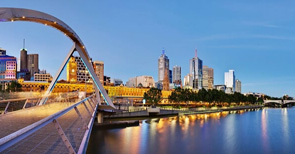-

Structural fire protection in a motorway tunnel
The B55a urban motorway tunnel located in Cologne is currently undergoing a general overhaul. As part of this work, the safety standards, fire protection arrangements and tunnel equipment are also being upgraded to meet European requirements. In order to facilitate this upgrade, the client tested product systems from MC that offer particularly convincing results.
Structural fire protection in a motorway tunnel
Cologne - Germany
The B55a urban motorway tunnel located in the Kalk district of Cologne is currently undergoing a general overhaul. As part of this work, the safety standards, fire protection arrangements and tunnel equipment are also being upgraded to meet European requirements. In order to facilitate this upgrade, the client and planning engineers are using tried and tested product systems from MC-Bauchemie that offer particularly convincing results in terms of their fire protection behaviour.
The 550 metre long tunnel consists of two vertically arranged tubes and, with around 110,000 vehicles per day passing through, counts among the busiest of Cologne’s highway sections. With refurbishment of the upper tunnel tube now completed, extensive repair work is currently being carried out in the lower tunnel tube under conditions of restricted traffic flow. To increase the concrete coverage of the ceilings (inverts) and walls of the tunnel tubes, the Cologne municipal authority acting as the client and the planning engineers Obermeyer (Cologne) have opted for the fibre-reinforced, flame- and fireproof, sprayable PCC concrete replacement Nafufill KM 250 and the high-performance coating for tunnel structures Emcephob HPC, both from MC, which are to be applied to an area measuring approximately 11,000 m2.
Fulfilling fire resistance
The fire protection design of highway tunnels is aligned to ZTV-ING1 Part 5, paragraphs 1+2, which specifies a defined fire load in the form of a temperature-time curve. In tunnel constructions that border directly onto other structures, an extended blazing fire phase is specified in order to accommodate the additional safety aspects involved. Because the two tunnel tubes in Cologne are vertically arranged, each taking one travel direction, these elevated blaze-based requirements were also applied for the concrete replacement system envisaged for the repair work.

© MC-Bauchemie 2016
The fibre-reinforced, sprayable PCC concrete replacement Nafufill KM 250 meets all such requirements and offers proven blaze resistance on the basis of even more demanding behaviours. It is thus ideally suited to applications in tunnel construction and also excels in terms of its very good flexural and compressive strength values (R 4-class mortar according to EN 1504). It offers a high level of resistance to deicing salts and carbonation and can be applied in large layer thicknesses without the need for additional reinforcement. In the case of the Cologne tunnel, Nafufill KM 250 is currently being applied onto the prepared existing concrete of the wall and ceiling (invert) area in a layer thickness of around 3 centimetres. As Nafufill KM 250 is likewise an approved repair and anode embedding mortar, it is also being used in the joint areas for cathodic corrosion protection.
Enhancing safety
The surface protection system Emcephob HPC specified for the tunnel tube interiors meets all the requirements demanded of a tunnel coating in accordance with ZTV-ING1, Part 3, paragraph 4, and Part 5. In Cologne, it is being used both to protect the concrete and as a permanent anti-graffiti coating for the lower wall areas. The high-performance coating is non-flammable (A2 -s1, d0, acc. to EN 13501-1) and, due to its excellent drop behaviour, will not contribute to fire propagation. Rated at Smoke Class 1, it will also not be the cause of any loss of visibility due to smoke development in the event of a fire – a real advancement in terms of fire protection and safety in traffic tunnels and similar structures. MC is also supplying a variety of injection resins, including the waterproofing resin MBC-VT 116 which is certified as a component of a bridge waterproofing system being applied below the mastic asphalt in accordance with ZTV-ING1 Part 7.1. It is also listed by the BASt2.
-
Name
Structural fire protection in a motorway tunnel
-
Country
Cologne - Germany, 2016
-
Fields of Expertise
-
Categories
-
Products
-
News
Click here to go to our News section.
-
MC-Pedia
In our MC-Pedia you will find technical articles on various topics written exclusively by our specialists.
-
Magazine
Get our latest issues of our customer and employee magazine MC aktiv.
-
Downloads
Find all relevant datasheets of our products as well as brochures of our company, Fields of Expertise and product categories here.
-
References
Click here to get to our library with reference projects for all types of application.
-
Careers
Click here to go to MC Career.
-
Contact
Click here to go to our Contact section.
